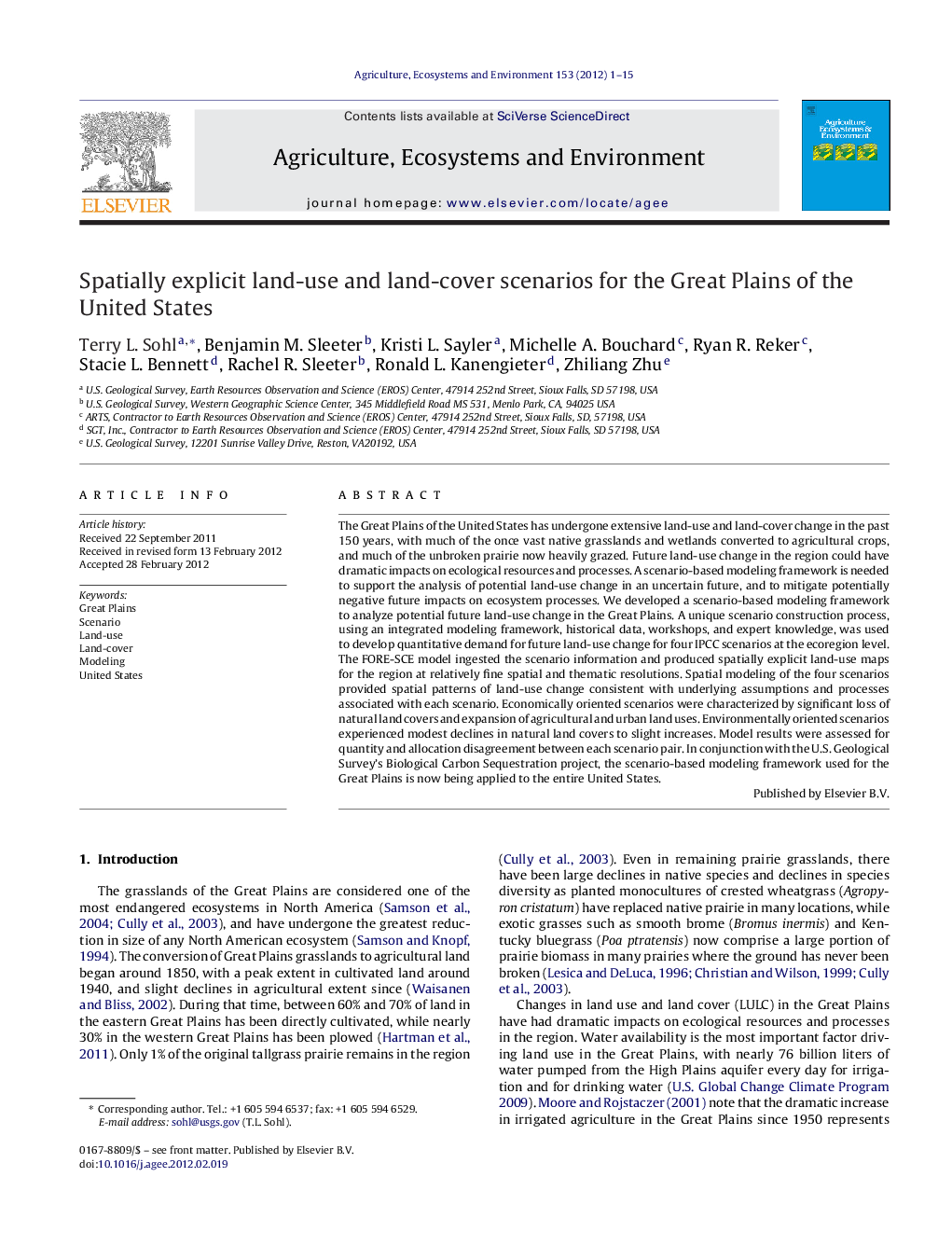| Article ID | Journal | Published Year | Pages | File Type |
|---|---|---|---|---|
| 2414532 | Agriculture, Ecosystems & Environment | 2012 | 15 Pages |
The Great Plains of the United States has undergone extensive land-use and land-cover change in the past 150 years, with much of the once vast native grasslands and wetlands converted to agricultural crops, and much of the unbroken prairie now heavily grazed. Future land-use change in the region could have dramatic impacts on ecological resources and processes. A scenario-based modeling framework is needed to support the analysis of potential land-use change in an uncertain future, and to mitigate potentially negative future impacts on ecosystem processes. We developed a scenario-based modeling framework to analyze potential future land-use change in the Great Plains. A unique scenario construction process, using an integrated modeling framework, historical data, workshops, and expert knowledge, was used to develop quantitative demand for future land-use change for four IPCC scenarios at the ecoregion level. The FORE-SCE model ingested the scenario information and produced spatially explicit land-use maps for the region at relatively fine spatial and thematic resolutions. Spatial modeling of the four scenarios provided spatial patterns of land-use change consistent with underlying assumptions and processes associated with each scenario. Economically oriented scenarios were characterized by significant loss of natural land covers and expansion of agricultural and urban land uses. Environmentally oriented scenarios experienced modest declines in natural land covers to slight increases. Model results were assessed for quantity and allocation disagreement between each scenario pair. In conjunction with the U.S. Geological Survey's Biological Carbon Sequestration project, the scenario-based modeling framework used for the Great Plains is now being applied to the entire United States.
► A scenario-based modeling framework was developed for the Great Plains of the U.S. ► Scenarios consistent with IPCC SRES storylines were downscaled to the Great Plains. ► The FORE-SCE model was used to create spatially explicit projections through 2100. ► Assessment was based on uncertainty, quantitative validation, and subjective analysis. ► The methodology is being used to map land-cover change for the entire U.S.
